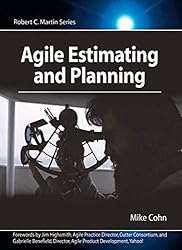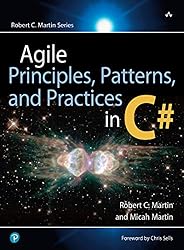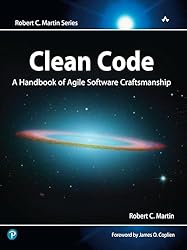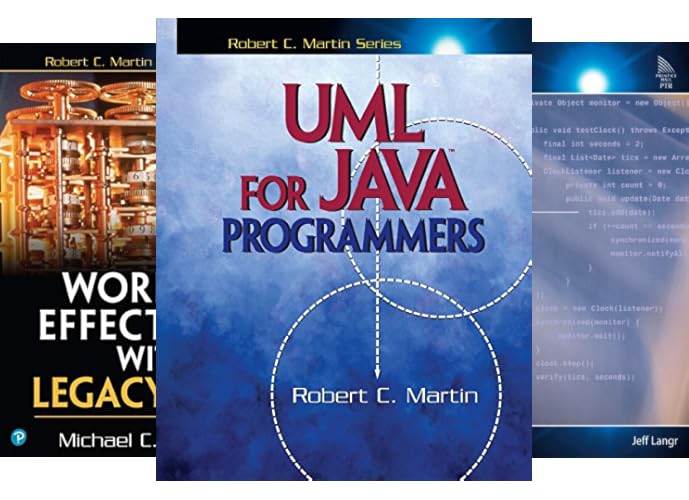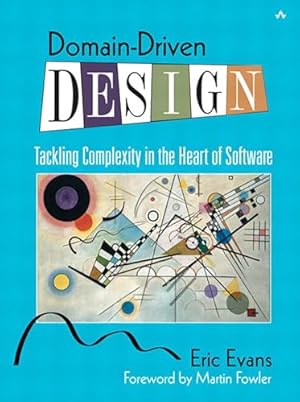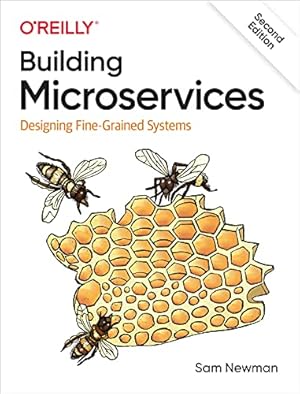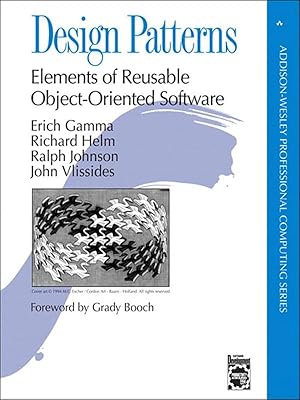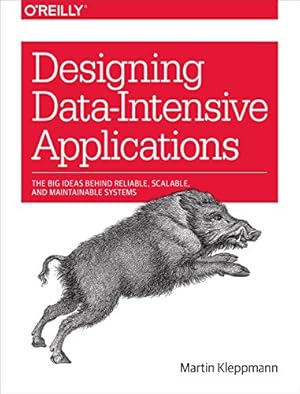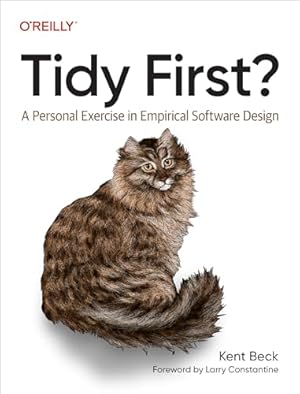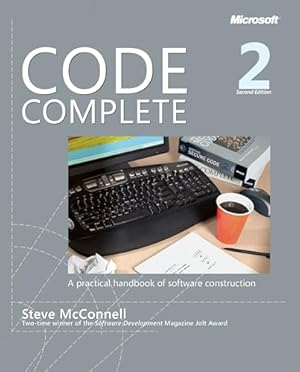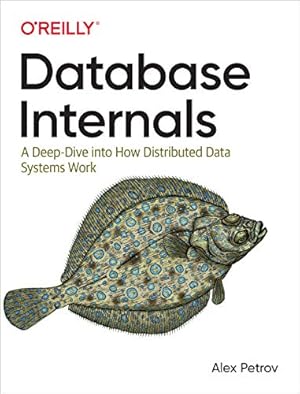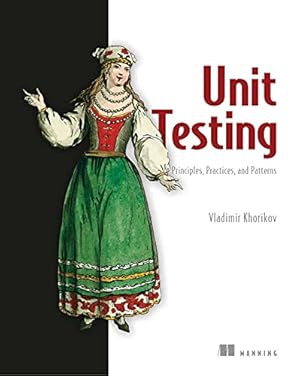Learn more
These promotions will be applied to this item:
Some promotions may be combined; others are not eligible to be combined with other offers. For details, please see the Terms & Conditions associated with these promotions.
- Highlight, take notes, and search in the book
- In this edition, page numbers are just like the physical edition
Your Memberships & Subscriptions

Download the free Kindle app and start reading Kindle books instantly on your smartphone, tablet, or computer - no Kindle device required.
Read instantly on your browser with Kindle for Web.
Using your mobile phone camera - scan the code below and download the Kindle app.



 Audible sample
Audible sample Follow the authors
OK
Clean Architecture: A Craftsman's Guide to Software Structure and Design (Robert C. Martin Series) 1st Edition, Kindle Edition
| Customers reported quality issues in this eBook. This eBook has: Typos, Poor Image Quality, Broken Navigation . The publisher has been notified to correct these issues. |
Practical Software Architecture Solutions from the Legendary Robert C. Martin (“Uncle Bob”)
By applying universal rules of software architecture, you can dramatically improve developer productivity throughout the life of any software system. Now, building upon the success of his best-selling books Clean Code and The Clean Coder, legendary software craftsman Robert C. Martin (“Uncle Bob”) reveals those rules and helps you apply them.
Martin’s Clean Architecture doesn’t merely present options. Drawing on over a half-century of experience in software environments of every imaginable type, Martin tells you what choices to make and why they are critical to your success. As you’ve come to expect from Uncle Bob, this book is packed with direct, no-nonsense solutions for the real challenges you’ll face–the ones that will make or break your projects.
- Learn what software architects need to achieve–and core disciplines and practices for achieving it
- Master essential software design principles for addressing function, component separation, and data management
- See how programming paradigms impose discipline by restricting what developers can do
- Understand what’s critically important and what’s merely a “detail”
- Implement optimal, high-level structures for web, database, thick-client, console, and embedded applications
- Define appropriate boundaries and layers, and organize components and services
- See why designs and architectures go wrong, and how to prevent (or fix) these failures
Clean Architecture is essential reading for every current or aspiring software architect, systems analyst, system designer, and software manager–and for every programmer who must execute someone else’s designs.
Register your product for convenient access to downloads, updates, and/or corrections as they become available.
- ISBN-13978-0134494326
- Edition1st
- PublisherPearson
- Publication dateSeptember 12, 2017
- LanguageEnglish
- File size9.5 MB
Kindle E-Readers
- Kindle Paperwhite
- Kindle Oasis
- All New Kindle E-reader (11th Generation)
- Kindle Paperwhite (11th Generation)
- Kindle
- Kindle Paperwhite (12th Generation)
- Kindle Voyage
- All new Kindle paperwhite
- Kindle Scribe (1st Generation)
- All New Kindle E-reader
- Kindle Oasis (9th Generation)
- Kindle Paperwhite (10th Generation)
- Kindle Oasis (10th Generation)
- Kindle Paperwhite (5th Generation)
- Kindle (11th Generation, 2024 Release)
- Kindle Touch
- Kindle Scribe, 1st generation (2024 release)
- Kindle (10th Generation)
Fire Tablets
Shop this series
See full series- Kindle Price:$130.29By placing your order, you're purchasing a license to the content and you agree to the Kindle Store Terms of Use.
- Kindle Price:$207.25By placing your order, you're purchasing a license to the content and you agree to the Kindle Store Terms of Use.
- Kindle Price:$358.66By placing your order, you're purchasing a license to the content and you agree to the Kindle Store Terms of Use.
- Kindle Price:$488.92By placing your order, you're purchasing a license to the content and you agree to the Kindle Store Terms of Use.
Shop this series
This option includes 3 books.
This option includes 5 books.
This option includes 10 books.
This option includes 14 books.
Customers also bought or read
- The Pragmatic Programmer: Your journey to mastery, 20th Anniversary Edition
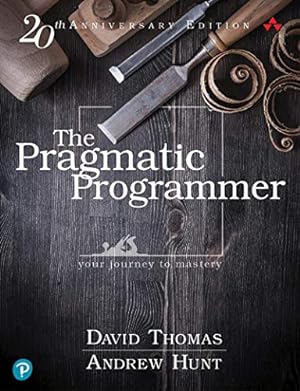 Kindle Edition$31.41$31.41
Kindle Edition$31.41$31.41 - Software Architecture: The Hard Parts: Modern Trade-Off Analyses for Distributed Architectures
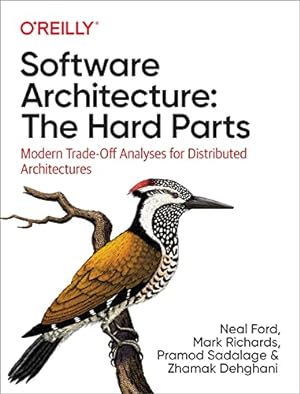 Kindle Edition$41.79$41.79
Kindle Edition$41.79$41.79 - Refactoring: Improving the Design of Existing Code (Addison-Wesley Signature Series (Fowler))
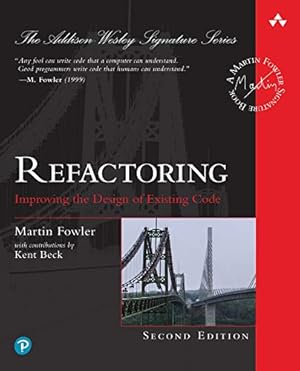 Kindle Edition$46.39$46.39
Kindle Edition$46.39$46.39 - Modern Software Engineering: Doing What Works to Build Better Software Faster
 Kindle Edition$30.39$30.39
Kindle Edition$30.39$30.39 - Patterns of Enterprise Application Architecture (Addison-Wesley Signature Series (Fowler))
 Kindle Edition$48.69$48.69
Kindle Edition$48.69$48.69 - Head First Design Patterns: Building Extensible and Maintainable Object-Oriented Software
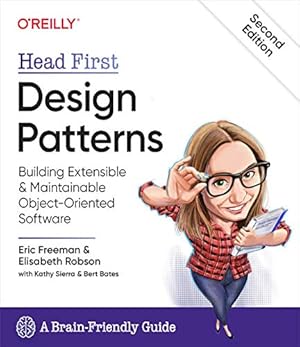 Kindle Edition$30.76$30.76
Kindle Edition$30.76$30.76 - Learning Domain-Driven Design: Aligning Software Architecture and Business Strategy
 Kindle Edition$35.62$35.62
Kindle Edition$35.62$35.62 - System Design Interview – An insider's guide#1 Best SellerDistributed Systems & Computing
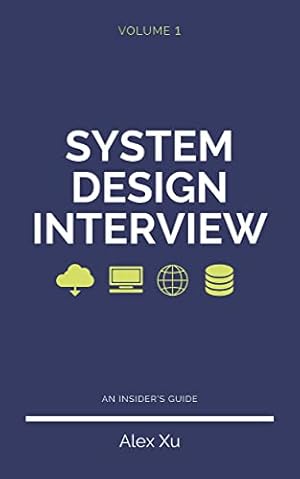 Kindle Edition$39.99$39.99
Kindle Edition$39.99$39.99 - The Staff Engineer's Path: A Guide for Individual Contributors Navigating Growth and Change
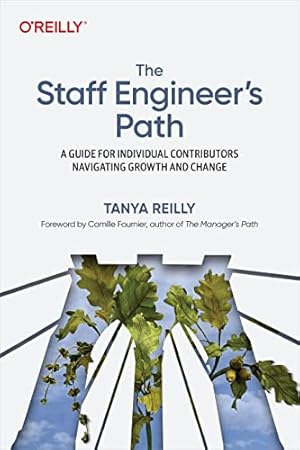 Kindle Edition$19.99$19.99
Kindle Edition$19.99$19.99 - Monolith to Microservices: Evolutionary Patterns to Transform Your Monolith
 Kindle Edition$28.48$28.48
Kindle Edition$28.48$28.48 - Software Engineering at Google: Lessons Learned from Programming Over Time
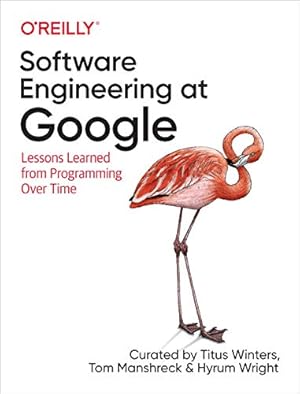 Kindle Edition$25.17$25.17
Kindle Edition$25.17$25.17 - Head First Software Architecture: A Learner's Guide to Architectural Thinking
 Kindle Edition$50.68$50.68
Kindle Edition$50.68$50.68
Customers who bought this item also bought
 The goal of software architecture is to minimize the human resources required to build and maintain the required system.Highlighted by 3,341 Kindle readers
The goal of software architecture is to minimize the human resources required to build and maintain the required system.Highlighted by 3,341 Kindle readers Structured programming imposes discipline on direct transfer of control.Highlighted by 2,297 Kindle readers
Structured programming imposes discipline on direct transfer of control.Highlighted by 2,297 Kindle readers Object-oriented programming imposes discipline on indirect transfer of control.Highlighted by 2,238 Kindle readers
Object-oriented programming imposes discipline on indirect transfer of control.Highlighted by 2,238 Kindle readers
From the brand

From the Publisher

From the Preface of "Clean Architecture"
“…The rules of software architecture are the rules of ordering and assembling the building blocks of programs. And since those building blocks are universal and haven’t changed, the rules for ordering them are likewise universal and changeless.
But one thing has changed: Back then, we didn’t know what the rules were. Consequently, we broke them, over and over again. Now, with half a century of experience behind us, we have a grasp of those rules.
And it is those rules—those timeless, changeless, rules—that this book is all about.”
— Robert C. "Uncle Bob" Martin

Clean Code: A Handbook of Agile Software Craftsmanship
|

The Clean Code: Practical Advices for the Professional Programmer
|

Clean Craftsmanship: Desciplines, Standards, and Ethics
|

Clean Agile: Back to Basics
|

Clean Architecture: A Craftsman's Guide to Software Structure and Design
|
|
|---|---|---|---|---|---|
| Customer Reviews |
4.7 out of 5 stars 6,517
|
4.6 out of 5 stars 2,219
|
4.5 out of 5 stars 185
|
4.6 out of 5 stars 602
|
4.6 out of 5 stars 3,760
|
| Price | $28.01$28.01 | $32.93$32.93 | $39.73$39.73 | $36.18$36.18 | $27.19$27.19 |
| Best agile practices of cleaning code “on the fly” Software Craftsmanship. | Endure and succeed amidst swirling uncertainty and nonstop pressure. | Picks up where Clean Code leaves off, outlining additional ways to write quality and trusted code you can be proud of every day. | A clear and concise guide to basic Agile values and principles. Perfect for those new to Agile methods and long-time developers who want to simplify approaches for the better. | Direct, no-nonsense answers to key architecture and design questions. | |
| "It is the best pragmatic application of Lean principles to software I have ever seen in print." —James O. Coplien, Founder of the Pasteur Organizational Patterns project | “Some technical books inspire and teach; some delight and amuse. Rarely does a technical book do all four of these things.” — George Bullock | ". . . [A] timely and humble reminder of the ever-increasing complexity of our programmatic world and how we owe it to the legacy of humankind--and to ourselves--to practice ethical development.” — Stacia Heimgartner Viscardi, CST & Agile Mentor | “What is in the world of Agile development is nothing compared to what could be. This book is Bob’s perspective on what to focus on to get to that ‘what could be.’ And he’s been there, so it’s worth listening.” — Kent Beck | "A good architecture comes from understanding it more as a journey than as a destination, more as an ongoing process of enquiry than as a frozen artifact." — Kevlin Henney |

Pick Up Where Clean Code Leaves Off
"As software developers, we have to continually solve important problems for our employers, customers, colleagues, and future selves. Getting the app to work, though difficult, is not enough, it does not make you a craftsman. With an app working, you have passed the app-titude test. You may have the aptitude to be a craftsman, but there is more to master. In these pages, Bob expresses clearly the techniques and responsibilities to go beyond the app-titude test and shows the way of the serious software craftsman."
— James Grenning, author of Test-Driven Development for Embedded C and Agile Manifesto co-author
Editorial Reviews
About the Author
Product details
- ASIN : B075LRM681
- Publisher : Pearson; 1st edition (September 12, 2017)
- Publication date : September 12, 2017
- Language : English
- File size : 9.5 MB
- Simultaneous device usage : Up to 5 simultaneous devices, per publisher limits
- Text-to-Speech : Enabled
- Screen Reader : Supported
- Enhanced typesetting : Enabled
- X-Ray : Not Enabled
- Word Wise : Enabled
- Print length : 431 pages
- Best Sellers Rank: #77,246 in Kindle Store (See Top 100 in Kindle Store)
- Customer Reviews:
About the authors

I'm an independent consultant, international speaker, writer and trainer. I live in Bristol and online.
My software development interests are in patterns, programming, practice and process. As well as contributing to a number of projects, I've been involved in (far too) many committees (for conferences, publications and standards, but as yet I've not been on a committee for committees).
My fiction writing tends to the short side — and occasionally to the dark side — spanning a number of genres.

Robert Cecil Martin (colloquially known as Uncle Bob) is an American software engineer and author. He is a co-author of the Agile Manifesto.
Bio from Wikipedia, the free encyclopedeia. Photo by Tim-bezhashvyly (Own work) [CC BY-SA 4.0 (http://creativecommons.org/licenses/by-sa/4.0)], via Wikimedia Commons.
Customer reviews
Customer Reviews, including Product Star Ratings help customers to learn more about the product and decide whether it is the right product for them.
To calculate the overall star rating and percentage breakdown by star, we don’t use a simple average. Instead, our system considers things like how recent a review is and if the reviewer bought the item on Amazon. It also analyzed reviews to verify trustworthiness.
Learn more how customers reviews work on AmazonCustomers say
Customers find the book informative and well-structured, particularly appreciating how it explains concepts like SOLID. Moreover, they consider it a must-read for software engineers, with one customer noting how it provides a path through software design challenges. Additionally, the book's length receives positive feedback, with one customer mentioning the chapters are about 5-15 pages long.
AI-generated from the text of customer reviews
Customers find the book informative and well-explained, providing important concepts such as SOLID principles.
"...of books full of advises, thoughts, ideas, rationales and principles with the same impact...." Read more
"...The book is partially a very detailed description of the ideas from the article and what is behind them...." Read more
"I found a lot of the explanations to be very clear and thought provoking...." Read more
"...from many sources, then boiling it down to easily and enjoyably absorbable explanations...." Read more
Customers appreciate the book's architecture, finding it well structured and interesting to read, with one customer highlighting its useful advice on components design.
"...and review his software development discipline philosophy in a concise and complete harmonious set of essays...." Read more
"...Most memorable chapters for me were the Screaming Architecture and the Clean Architecture...." Read more
"I found a lot of the explanations to be very clear and thought provoking...." Read more
"...can read it as a newcomer to the field, but the lessons contained will not really sink in until you have a few battle scars in your skin, and you'd..." Read more
Customers praise the book's approach to software architecture, describing it as a must-read for software engineers and a capital work in the field.
"...But the book has the value to reunite and review his software development discipline philosophy in a concise and complete harmonious set of..." Read more
"...This book will change how you create your software and will push up the quality of .your output a couple orders of magnitude...." Read more
"...Unfortunately, no. This book is still worth reading for people interested in software design, I don't believe the impact and role of this book will..." Read more
"Great book about software architecture and design...." Read more
Customers appreciate the cleanliness of the book.
"...It guarantees independence, reusable, clean architecture. This book explains how and why for this...." Read more
"...Clean architecture was an interesting read. I liked the clean architecture pattern that the author presents and his explanation of it...." Read more
"...A more stable and safer; a cleaner one. Thank you very much for this book, I'm already applying its practical lessons!" Read more
"...you gain an understanding of the principles required to keep your application clean and your development and maintenance costs low." Read more
Customers appreciate the book's length, with one customer noting that chapters are about 5-15 pages long, and another mentioning that the book is divided into 6 parts.
"...The book has 6 parts, (1) Introduction, (2) Starting with the Bricks: Programming Paradigms, (3) Design Principles, (4) Component Principles, (5)..." Read more
"I got this book for class and it's really good! The chapters are like 5-15 pages (not 50+ like other programming books) so I can get up to speed..." Read more
"The book is well organised with short chapters. However, a lot of it basic & doesn't seem like it's a book published in 2017!..." Read more
"This book has important concepts developers should know. It can be written in 100 pages without the fluff. This book is full of fluff and repetition." Read more
Customers appreciate the code quality in the book, with one noting it is clean and another highlighting the assumption of code ownership.
"...This book has almost no code in it, so you certainly can read it as a newcomer to the field, but the lessons contained will not really sink in until..." Read more
"...Four points stood out to me, (1) the assumption of code ownership, (2) the focus on up-front structure rather than gradual evolution, (3) the..." Read more
"...book with everything you need to know to make sure that your code is clean and scalable" Read more
Reviews with images
It came quickly, but damaged
Top reviews from the United States
There was a problem filtering reviews. Please reload the page.
- Reviewed in the United States on August 18, 2018No doubt that Robert C. Martin is one of the most influential author and software development theorist of our times. The already standard SOLID principles had been with us for decades, serving software discipline with full success. The Clean Series is a set of books full of advises, thoughts, ideas, rationales and principles with the same impact. If you know his videos and lectures, probably this book will see familiar and many of the topics discussed repetitive. But the book has the value to reunite and review his software development discipline philosophy in a concise and complete harmonious set of essays.
The main idea is to avoid dependency applying the Dependency Rule at all levels, classes and components. The Dependency Inversion graph, where high-level functions calling middle-level functions through an interface that the middle-interface implements, is a medular software construction that should be applied as an obsessive pattern. It guarantees independence, reusable, clean architecture. This book explains how and why for this.
The result is the idea of Plugin architecture where the core of the system, the set of functionality that implements the use cases and business rules (interactors (R. C. Martin)/controls (I. Jacobson)/controllers (C. Larman) should be the center at which all other parts (IO components, details) will point via abstractions (interfaces or abstract classes).
I have been practicing clean architecture ideas for many years (and before Martin coined the term) following Martin guidance a principles. Its product is natural, simple, robust, structured, reusable and beautiful to work.
Paradoxically, the last chapter about packaging components--written by S. Brown--seems a contradiction to the whole book ideas and Brown somehow point to that ("My definition of a component is slightly different..."). In that chapter, Brown explains several alternatives for software architecture organization with a marked inclination for a monolithic package that represents the services of the system (and repository interaction) and another that represents the controllers. The reasons of that resultant recommendation (a junior undisciplined programmer that don't follow the cleanliness of the architecture, etc.) are really weak and out of the architect control. His recommendation violates almost all components principles explained by Martin (REP, CCP, CRP, etc.)
I love this book and totally recommend the book for all fans of good, clean architecture.
- Reviewed in the United States on November 1, 2017I liked this book less than the Clean Code, but it was a better read for me than the Clean Coder. I've found a distillation of this book in article from Robert Martin, which he wrote in 2012 while working at 8th Light (I cannot paste a link in here). The book is partially a very detailed description of the ideas from the article and what is behind them.
The book starts with 3 myths we developers live in:
1. Myth: We just need to get to market first and we clean it up later.
2. Myth: Messy code makes us faster today and slows us later. Myth: We can switch mode from making messes to cleaning messes. (making messes is always slower, even in very short term as shown in example of a simple kata in the book)
3. Myth: Starting from scratch is a solution.
There is a well written history lesson in the next part. Uncle Bob presents Structured Programming, OOP and Functional Programming and says there is nothing else (programming paradigm-wise) to be invented. Part 3 is about SOLID principles from architecture point of view and part 4 are his Component Principles about component cohesion and coupling from his Agile Software Development book.
Part 5 is about Architecture and was the most interesting to read. Most memorable chapters for me were the Screaming Architecture and the Clean Architecture. Both of them are not new, you could have seen them in his videos or the article from 8thlight. The point of Screaming Architecture is that when a new developer joins a health-care project, he should be able to immediately tell "this is a health-care project" just from the project structure. Another topic which was part of multiple chapters, are micro-services. I felt that Robert Martin is not very fond of starting with them. He says services are little more than expensive function calls and as a communication mechanism between the project boundaries (i.e. a detail), they are a decision which should be deffered as far as possible.
Part 6, the Details, are a detailed explanations of his article Clean Architecture from 2012. There is a little gem in there, the Missing Chapter 34 written by Simon Brown. I liked his explanation of 4 different kinds of packaging classes together to form components.
- Reviewed in the United States on August 16, 2019I found a lot of the explanations to be very clear and thought provoking.
However, there is little practical advice on making trade-offs, supporting operational requirements, etc. This is a book about structuring software components. The subtitle says as much, so you shouldn't expect a complete guide on application, system or enterprise architecture. In fact the author seems to misunderstand the meaning of "service architecture".
I think, overall, this is a very limited, if important, perspective on software architecture.
Still, it's a relatively light read with interesting insights.
Top reviews from other countries
-
 Amazon CustomerReviewed in Poland on September 26, 2024
Amazon CustomerReviewed in Poland on September 26, 20245.0 out of 5 stars Super książka!
Dobra zawartość, dobrze się czyta. Nic tylko polecać chcącym poszerzać swoją wiedzę.
 Bence DemeterReviewed in Sweden on July 3, 2024
Bence DemeterReviewed in Sweden on July 3, 20245.0 out of 5 stars Must-read for everyone who wants to deal with software architectures
This book is a real gem in the software architecture field. It discusses the basics and programming paradigms, then goes up a level and speaks about component cohesion, then component coupling, sketches up a general architecture model that relies on these principles, and then explains many different cases and patterns. Arguably one of the most valuable books I've ever read.
-
 PhilippeReviewed in Germany on May 26, 2023
PhilippeReviewed in Germany on May 26, 20235.0 out of 5 stars Pflichtlektüre
Robert C. Martin präsentiert in diesem hervorragenden Werk seine Herangehensweise an Softwarearchitektur, bekannt als "Clean Architecture", basierend auf den SOLID Principles.
Wenn man bereits Vorträge von "Uncle Bob" gesehen hat, wird man wissen, dass er gerne Anekdoten erzählt. Dieses Buch bildet da keine Ausnahme, wie der umfangreiche autobiographische Schlussteil "Architecture Archaeology" zeigt. Etwa 70 Seiten können übersprungen werden, wenn man nur an der Methodik interessiert ist. Teilweise enthalten Absätze auch keine relevanten Informationen. Diese Seiten hätten stattdessen für ausführlichere Beschreibungen (die manchmal knapp geraten sind) und konkretere Beispiele genutzt werden können.
Obwohl das Buch laut Einleitung auch für Manager geeignet ist, sollte man vor der Lektüre über ein solides Basiswissen zu Design Patterns (einschließlich MVC/MVP) und UML-Klassendiagrammen verfügen. Gute Erklärungen dazu finden sich auf sourcemaking.com.
Um Bonusmaterial zum Buch zu erhalten, ist eine Registrierung auf der InformIT-Webseite des Verlags erforderlich. Derzeit gibt es nach der Registrierung jedoch nur einen Link zur Webseite von Clean Coders.
Während des Lesens von Clean Architecture sind mir einige Fehler aufgefallen. Diese sind jedoch rein kosmetischer Natur und beeinflussen nicht den Inhalt.
Trotz meiner Kritikpunkte empfehle ich definitiv die Lektüre dieses Buches.
 shahid k.Reviewed in India on March 25, 2023
shahid k.Reviewed in India on March 25, 20235.0 out of 5 stars Best technical book I have read
I have other books on coding and it’s standard This art covers everything from ethics to estimation this a good asset for anybody who want to make quality software i there was more on tdd I would have delighted but this book is super
-
 Guillermo SotoReviewed in Mexico on September 8, 2024
Guillermo SotoReviewed in Mexico on September 8, 20245.0 out of 5 stars Excelente
Ya lo tenia en digital y lo adquirí en físico para tenerlo como referencia.









